My Midwest Road Trip Was Black-Owned and Green Book-Inspired
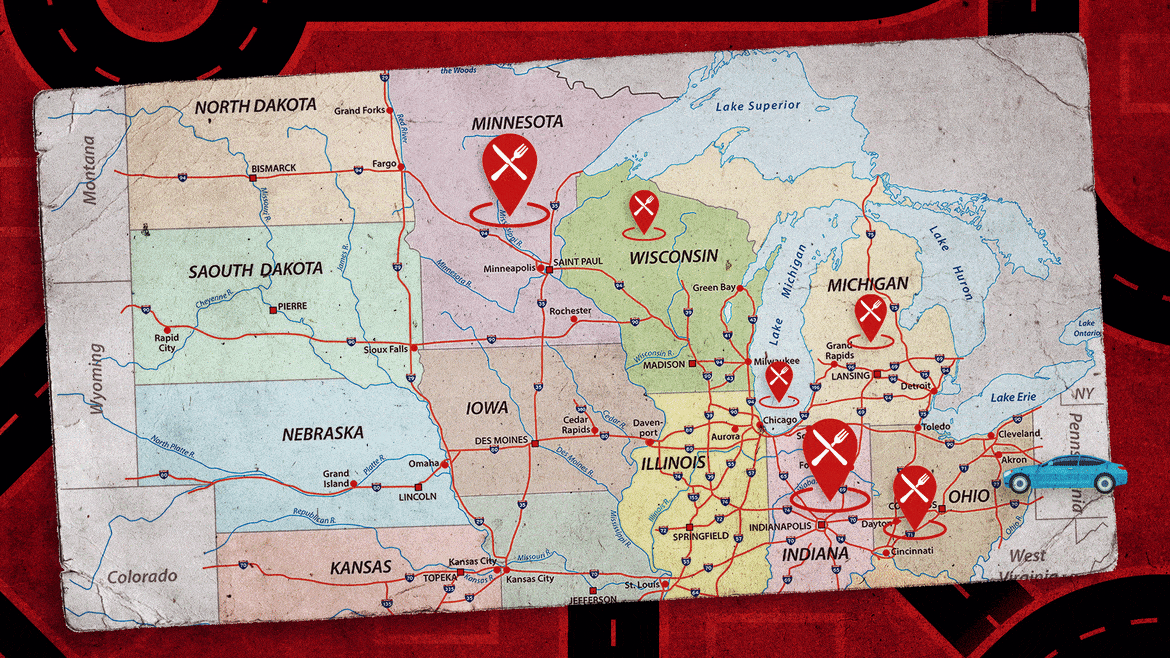
- Oops!Something went wrong.Please try again later.
- Oops!Something went wrong.Please try again later.
I've been living with more intention lately, from my morning routine to who I allow access to my time and energy. Despite the heartbreaking tragedies of 2020, this year has given me the gift of slowing down.
This mindset shift has spilled into the way I decide to travel. I'm not sure if the days will ever come back to where you can country hop serendipitously without care or experience the thrill of finding a glitch-fare and booking the trip last-minute.
But I do know, as travel resumes, we can be more intentional with how we travel and where we decide to spend our hard-earned coins. Currently, there's been a demand and interest to support Black-owned establishments. According to Google Trends, when compared to 10 years ago, search interest in "Black-owned" jumped by 36x in 2020.
With road trips gaining popularity, I decided to combine my slow travel mindset with shopping and supporting Black-owned companies and organizations. Thus, my idea for a Black-owned Midwest road trip adventure was born.
As I drove from state to state, I reflected on the importance of my space in this world and what it means to be a Black traveler.
Black travelers during the Great Migration, a time when six-million African Americans fled the Jim Crow South for North, Midwest, and Western states, used resources such as The Negro Motorist Green Book to help navigate their journey. This exodus from the South is chronicled in-depth in author and journalist Isabel Wilkerson's novel The Warmth Of Other Suns.
The Green Book served as a travel guide for African Americans and detailed safe lodging, restaurants, and gas stations. Civic leader Victor Hugo Green published the book from 1936 to 1966 and printed 15,00 copies yearly. Optimistically, Green wrote:
"There will be a day sometime in the near future when this guide will not have to be published. That is when we, as a race, will have equal opportunities and privileges in the United States. It will be a great day for us to suspend this publication for then we can go wherever we please, and without embarrassment.”
Even though The Green Book's publication has since been suspended, I'm not confident that the "someday" Green dreamed about has fully arrived yet. In 2020, Black people still don't feel safe or protected while jogging, walking in the park, hosting a BBQ, or sleeping in their own homes.
Sigh.
I took a solo road trip to help bring back the safe Black travel the Green Book hoped to achieve. It's not as in-depth as the original Green Book but save and bookmark this article for the next time you're looking to travel more consciously.
First Stop—Cleveland
I kicked off my road trip from Columbus, driving first to Cleveland, Ohio. Even though most of my family lives in the city, I've never explored it much outside of visiting my grandparent's home. I was surprised by the vibrancy of downtown and the passion of the locals I encountered to make their communities full of love, power, and hope.
One silver lining of the coronavirus pandemic is that it has forced me to see beauty and joy in nearby places. Travel adventures don't merely happen abroad—I can find excitement in overlooked destinations. I started my morning in Cleveland by hiking at Cuyahoga Valley National Park, the only national park in Ohio. I woke my family up at around 6 a.m. so that we could see the sunrise, and hiked the trails. The park was breathtaking, and any time I spend in nature I’m always left feeling more recentered and relaxed.
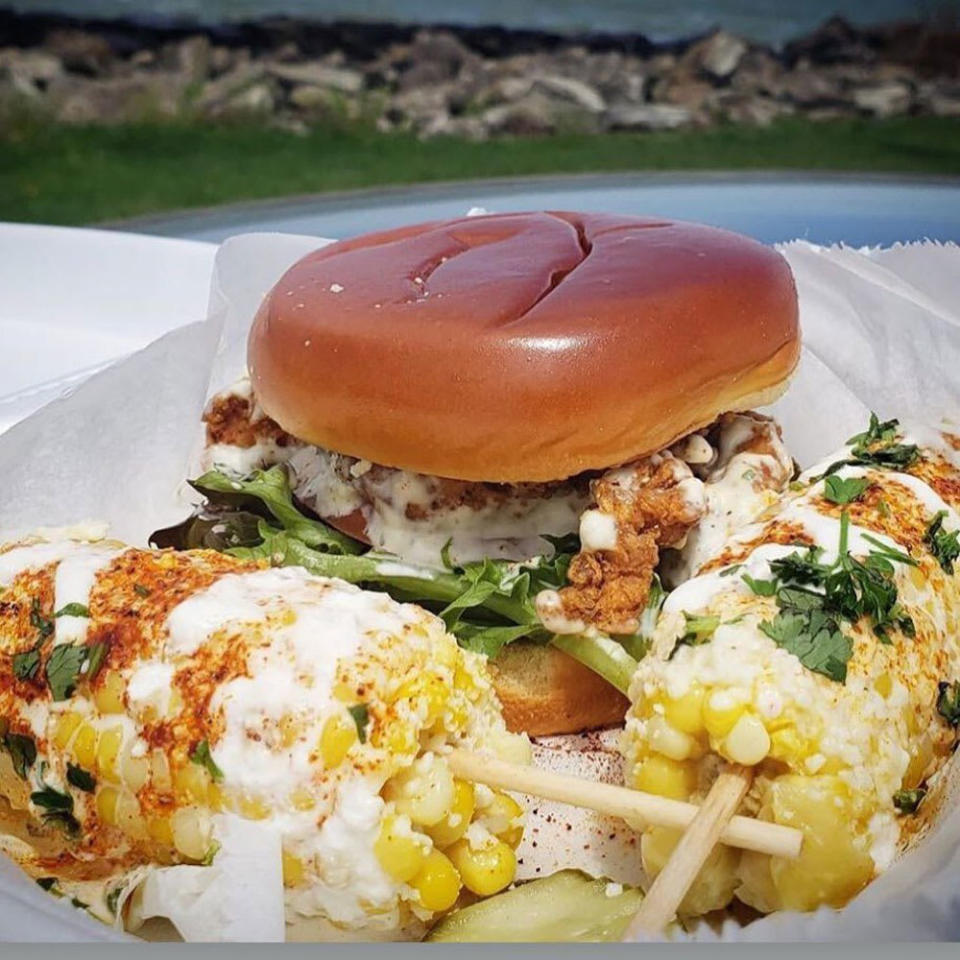
Sauce the City
I then ventured off to lunch, where I had the best chicken sandwich (sorry Poppies) at Sauce the City, founded by Victor James. I especially enjoyed their street corn that was over-loaded with flavor. The next day I spent the evening having the ultimate girls’ wine night at Chateau Hough, an urban winery with a greater purpose located in the Hough neighborhood. I spent the evening learning about the wine they produce and the opportunities for innovation and economic development they are providing for people through its non-profit, Neighborhood Solutions Inc.
Its mission, according to their website, “is to use innovative educational and entrepreneurial strategies to encourage, prepare and assist at-risk youth, veterans, and those returning — or who have returned — to neighborhoods after incarceration in creating greener, healthier and wealthier places to live, work, and raise families.”
My time in Cleveland wouldn't be complete without a coffee fix. For that, you can visit Cleveland Cold Brew and The Vegan Doughnut Company.
Next Up—Detroit:
I made my way to the motor-city, AKA, Detroit, Michigan, which is about two hours from Cleveland. Detroit is a center for much of what we consider iconic Black History, such as Motown, and serves as a hub for culture and innovation.
Sadly, on my second day there, the ruling for Breonna Taylor's case came down. It was announced that the killers would not be charged for murder but charged for the bullets that missed her. And on that day, I was standing in a replica of a slave ship at the Charles H. Wright Museum of African American History as I watched the breaking news notifications light up the phone.
I'll never forget where I was as I listened to an audio message from a friend, who was in disarray yet not shocked about the unjust verdict. I sat there with tears about to run down my face as I thought: What progress? What justice? Why, as a Black woman, have I never felt safe in this country? I still don't have the words or solutions to any of these questions.
Sigh, again.
Later that afternoon, I visited Détroit is the New Black, a retail space in the heart of the city featuring Black designers. During my visit, owner Roslyn Karamoko was teaching a class in the back of the store to youth looking to learn more about the fashion industry's ins-and-outs. Her retail space was not only for selling clothes but also for creating a community where the next generation could come in and learn.
I ended my time in Detroit having dinner at Central Kitchen + Bar restaurant. This location was the perfect spot for a girl's night, and I had my best friend accompany me. The atmosphere was lively and dimly lit. We ordered the Filet and Fries, which was mouth-watering and cooked to perfection.
The location did not disappoint and served as the perfect cap to my night. And for all those vegan road trippers, Detroit Vegan Soul was delicious. I indulged myself in classic soul food dishes for lunch without the guilt of calorie counting.
The Big One—Wisconsin:
The longest stretch of my road trip was five hours between Detroit and Milwaukee, Wisconsin. Honestly, I had some weird bias in my head against Milwaukee, but I was wrong. The city was filled with untapped talent and upcoming and thriving Black businesses to explore.
I had dinner every night I was there at Nino's Southern Sides. This hidden gem in the city was so good, my friend called her family immediately after eating telling everyone they had to visit. I enjoyed breakfast at Mi Casa Su Cafe, my friend noted that the side patio was so chic, that she felt as if she was in New York. My taste buds were transported to the islands after eating at Jewels Caribbean Restaurant for dinner. You can’t go wrong ordering the jerk chicken.
One of the main things I appreciated about Milwaukee was the people. I had the chance to visit the Wisconsin Black Historical Society and Museum, whose mission is to document and preserve the historical heritage of people of African descent in Wisconsin. I met with Founding Director Clayborn Benson III, who has a wealth of knowledge about hyper-local Black history in Milwaukee. Throughout my road-trip, I realized that there are so many unsung heroes that keep these communities powering towards the future.
For instance, Benson dedicated his life to preserving Black history. When he first launched the museum over 30 years ago, he would wake up every day at 4 a.m to go to his regular job, and then after-hours work on building the museum. Those hours have paid off and benefited more people than he'll ever meet.
"My purpose is bigger than me," he told me.
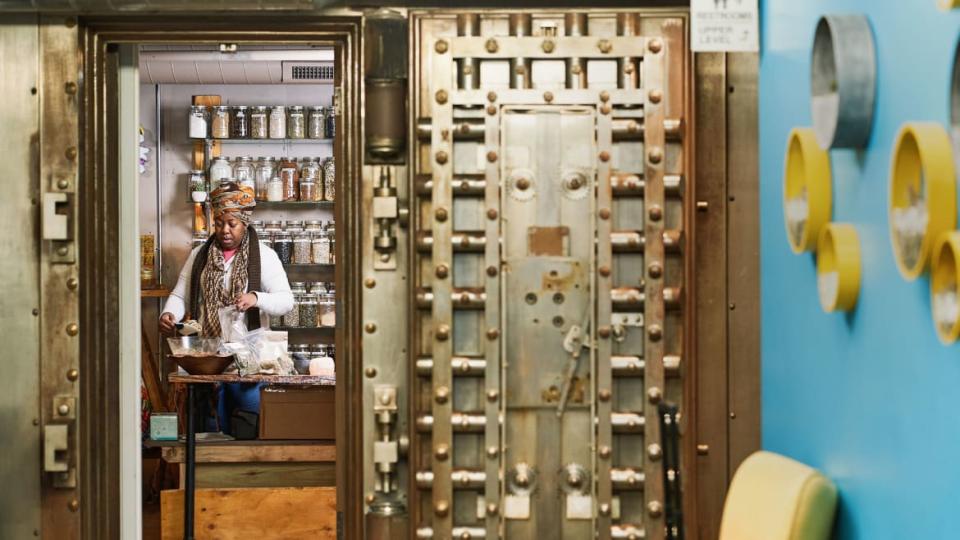
Sherman Phoenix
After leaving the museum, I had lunch at Sherman Phoenix; a market filled mainly with Black-owned businesses ranging from boutiques, a podcast studio, food, and beauty. Sherman Phoenix felt like home. I strolled through the shops, kids ran about freely, the smell of spices lined the building, and the joy of vendors was unmatched because they knew their business served a greater mission. I made sure to stock up one a few of my favorite things from body butters to scented soy candles while I was there.
I ended my night at Skybox Sports Bar , which provided a casual ambiance, and made me feel comfortable with COVID precautions in place. Before I hit the road to my next destination, I made sure to fill up on espresso Coffee Makes You Black.
Can’t miss— Chicago:
As my time in Wisconsin wrapped up, I hopped in my Kia Sorento and headed south towards the Windy City. One of the main obstacles I encountered when planning a Black-owned road trip across the Midwest was finding Black-owned accommodations. While there were a few options, the ones I encountered were not opened or permanently closed due to the pandemic. I used resources such the National Association of Black Hotel Owners, Operators & Developers, Inc. which has a hotel directory.
I was able to find a Black-owned hotel during my time in Illinois. The Chicago South Loop Hotel was affordably priced, and had a vintage aesthetic. The main aspect I loved about the hotel was its prime location to the city, and its parking, which is hard to come by in downtown Chicago. While it wasn’t open during my stay due to the pandemic, the hotel offers other services such as a cafe to the side of the lobby area. The hotel had strict COVID-19 precautions, and the staff was friendly.
Having lived in Chicago for 3 years, I was excited to return with a new focus, and discover Black owned business in the city that I wasn’t aware of. I spent my days mindfully taking in a city that I once called home. I visited my favorite juice bar FruVe, which I was happy to see expanded to multiple locations since the last time I visited. My go-to is the Harvest Acai Bowl, which paired perfectly with the season. But they also have a fresh variety of smoothies, bowels, and sea moss to choose from. Stock up Chicagoans!
During the day, I grabbed treats for me and a friend from Brown Sugar Bakery, on the Southwest side of the city. I chatted with a local while in line who said she’s been going there consistently for baked goods since they first opened shopped.
One of the main things I love about Chicago is all the different neighborhoods to explore and get lost in. I spent my days touring historic neighborhoods, including Bronzeville. Bronzeville has been referred to as the city’s “Black Metropolis.” I strolled the streets looking at historical landmarks and churches (drawn in particular to Mt. Pisgah Missionary Baptist Church), and ended my day at Chicago Chicken and Waffles. I’m sure you can guess what my order was.
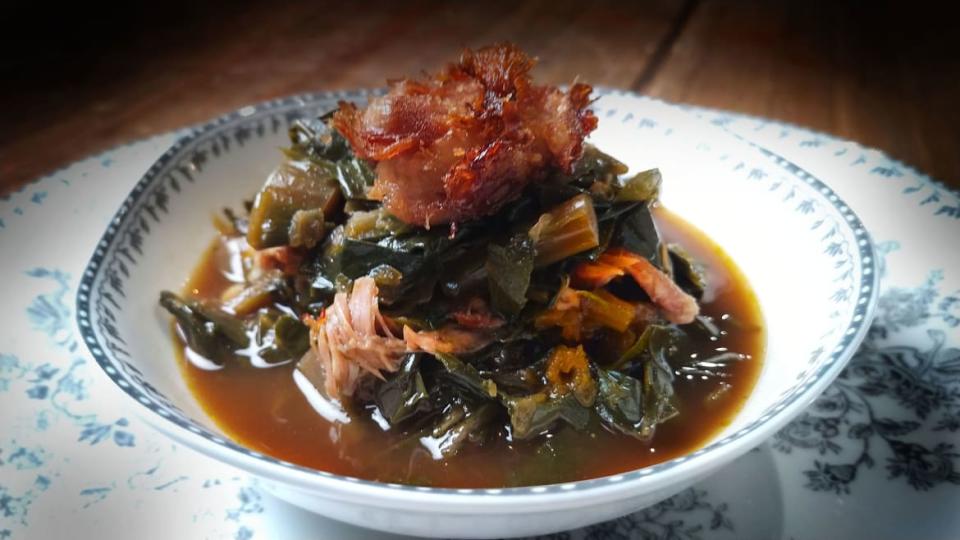
The next day, I explored Hyde Park and ate at Virtue Restaurant & Bar; a Southern American restaurant founded by Erick Williams. I ordered the gumbo, it was by far the best I’ve ever had, and was filled with chicken and andouille sauce, with a side of cornbread. I would also recommend not leaving without trying dessert (I ordered the apple pie).
Last Stop — Indianapolis:
After about a week and a half on the road, my last stop was Indianapolis, Indiana. The most encouraging thing about the city were the people that I fellowshipped with.
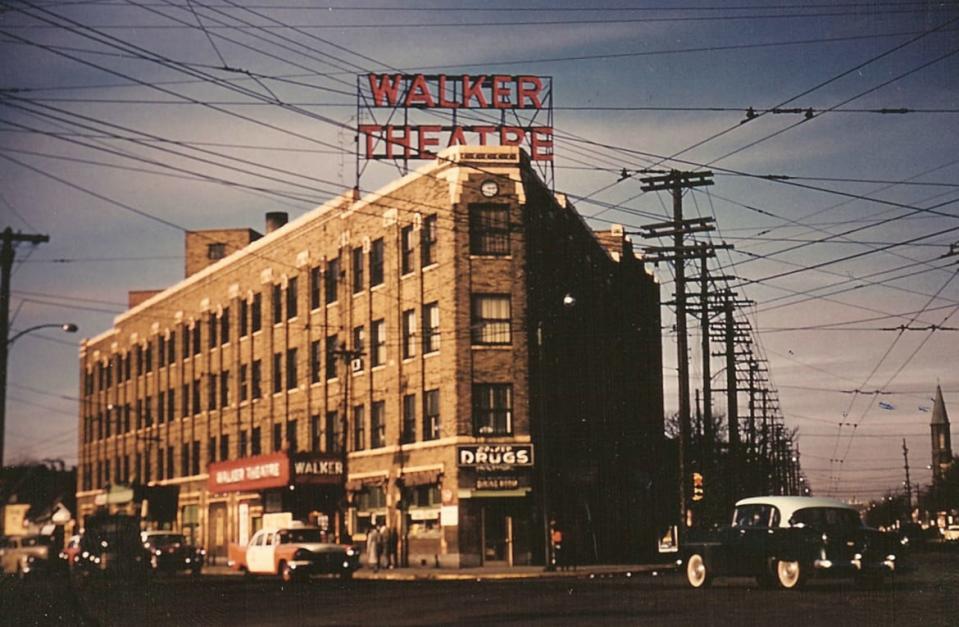
Indy these days is all about Madam CJ Walker, American's first self-made female millionaire, and I was able to tour the Madam Walker Legacy Center. She had a strong passion for entrepreneurship, and I could see that legacy reflected in the people I met, such as Que Wimberley, founder of The Missing Brick, "a dope pizza joint," as she describes it.
Wimberley founded The Missing Brick to build and establish generational wealth for her sons and family. During our vibrant and uplifting conversation, she stressed the importance of community and collaboration.
“You can go anywhere, but go where you are loved,” she said.
The next afternoon, I met with cultural curator Mali Jeffers, who showed me Indy's Black Lives Matter mural that was painted across Indiana Avenue. What made Indy's mural stand out was that it had the names of the men and women painted inside each letter that had died at the hands of police brutality. Jeffers reminded me of the importance of art activism. One of the main aspects of every radical-movement throughout history that we remember are the arts. We remember the songs birthed from despair, the films made to shine lights on the darkest parts of America, and the poems that beautifully wrapped langued around unprecedented pain and times.
Today, we need all forms of activism. Some are taking to the streets; some are launching businesses, and some are finding light in the darkness.
So, what is your protest? I love a quote I saw trending: "Don't let supporting Black-owned businesses be your protest; let it be your practice."
Get our top stories in your inbox every day. Sign up now!
Daily Beast Membership: Beast Inside goes deeper on the stories that matter to you. Learn more.

